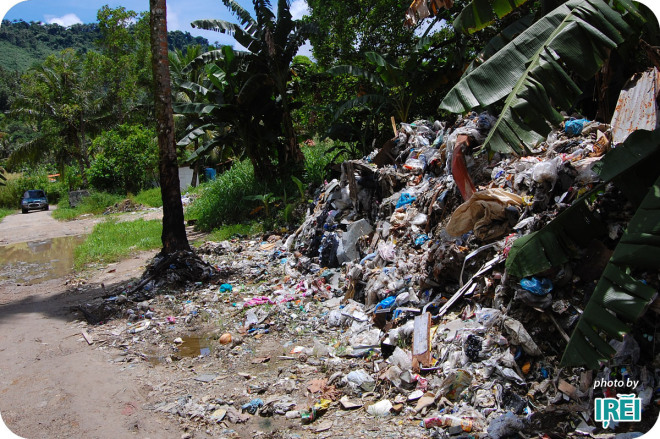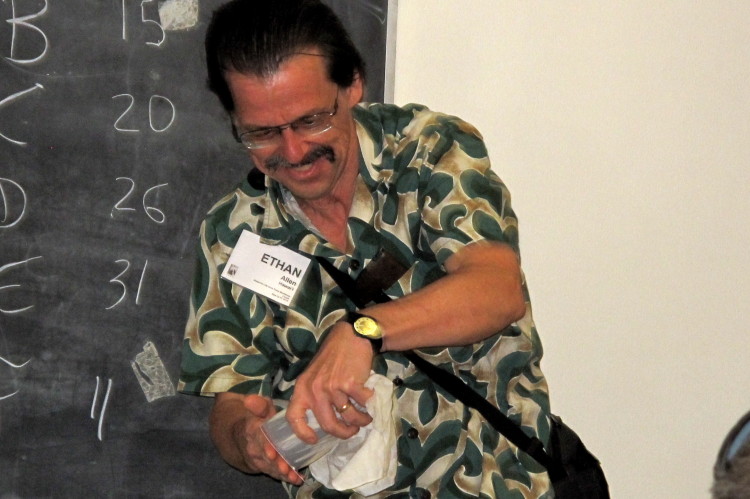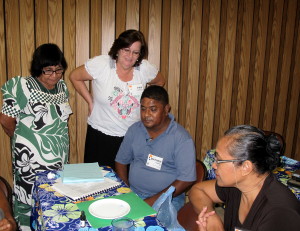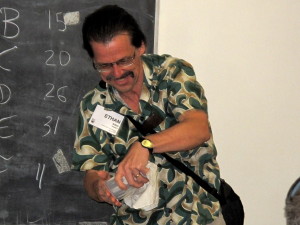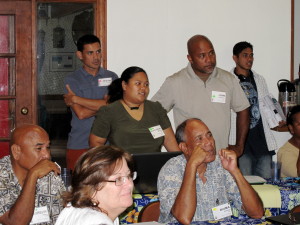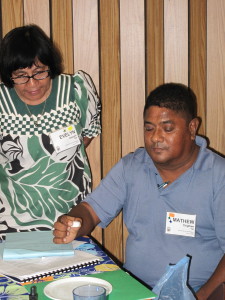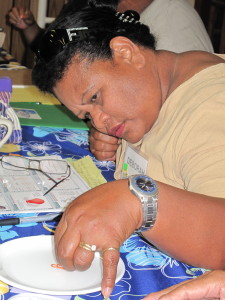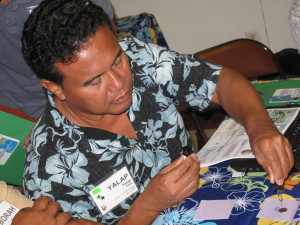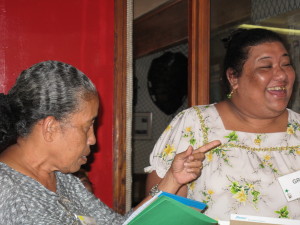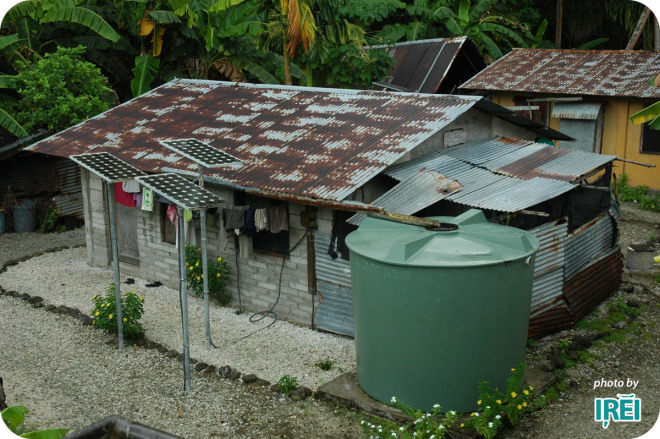This is a photo of a simple exercise designed to demonstrate unique properties of water. The attendees of the first Water for Life workshop in Chuuk enjoyed it. I now invite them to comment on the picture here and explain to other visitors of this blog why the balloon does not pop even though it is touching the fire from the lighter. Let’s practice explaining so we can later try sharing this with students in classrooms.


